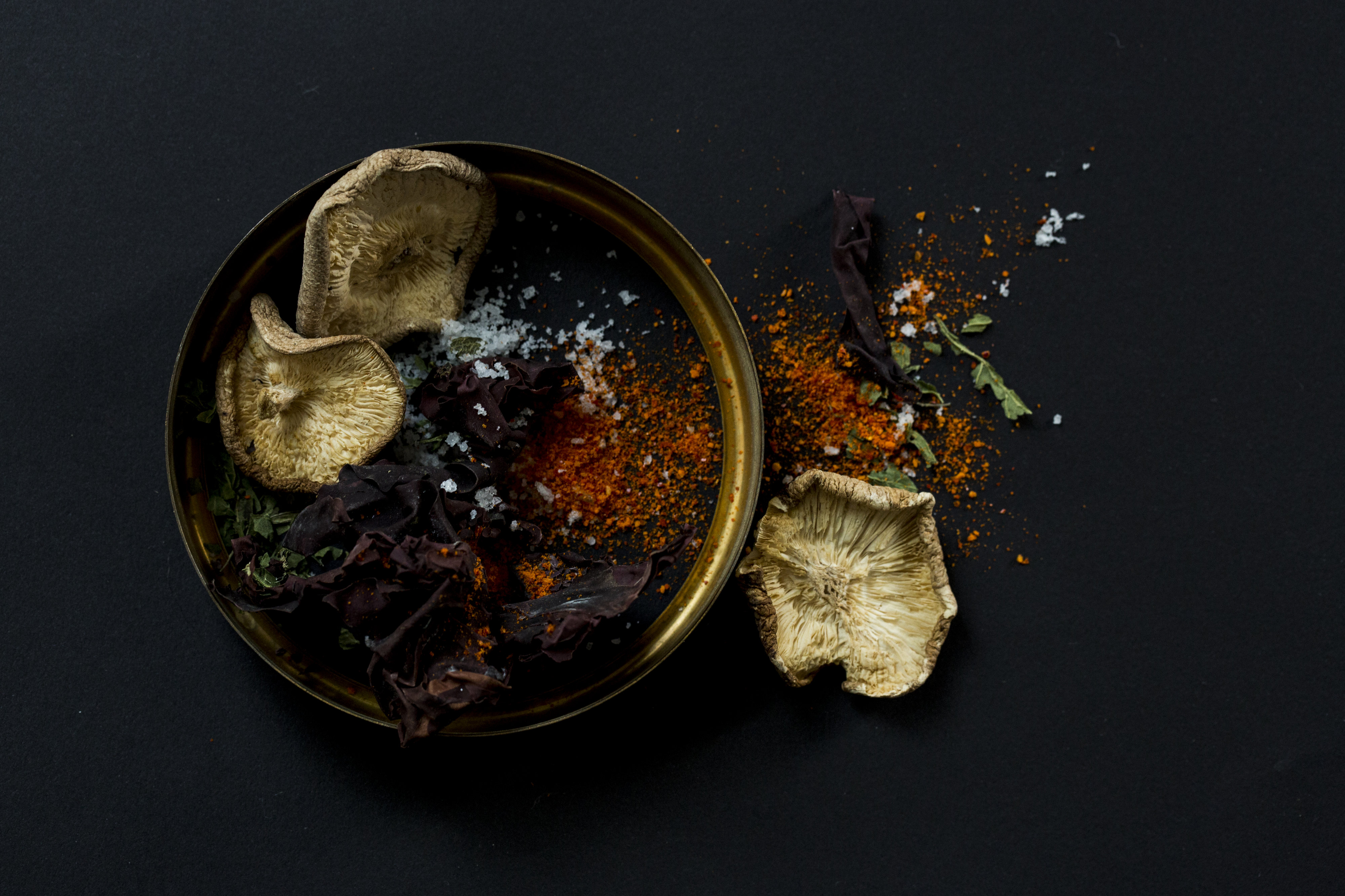We are very excited to offer a selection of handcrafted spice blends, from Claire Cheney, proprietor of Curio Spice Shop in Cambridge.
We are offering these spice blends in a wholesale format, geared towards professional chefs who want to incorporate her unique spice blends into their kitchens. Imagine for a moment devoting yourself to traveling the world, cultivating your own fair-practice sources for herbs and spices, importing them yourself in micro-batches, and then building a spice lab where you tell the story of a place or moment with the blends you create.
We caught up with Claire recently and discussed the origins of Curio Spice.
SFB: What made you decide to start creating these unique spice blends?
Claire: I started blending out of a passion for food and farming and the desire to create unique flavors that celebrate spice origins and stories. Sadly most spices are just dusty commodities in today’s global economy, so by sourcing rare and intensely flavorful spices from socially/environmentally responsible farms, I hope to change the way folks think about and use spices. While “pre-made” spice blends can get a bad rep for being bland or predictable, I’m happy that our blends are original and distinctive, with ingredients like pickled cherry blossoms, locally grown verbena or mastic resin.
SFB: Why spices, as opposed to something else?
Claire: I originally wanted to write full time, and actually got into spices through my research for a book on saffron. My other passion is natural perfume, which has helped hone my sense of smell; I studied with esteemed perfumer Mandy Aftel who taught me a lot about olfaction. But mostly I love to cook and eat and talk about food all the time and a career in spice makes this possible.
SFB: Your products are different than much of the what’s commercially available. What experience/person inspired you to do things this way? Is it harder to do things your way? Why do you do it anyway?
Claire: When I was 18 I worked with pigs on a farm in Italy. Everything we did was rooted in tradition, even if the methods were slow and a bit inefficient. Later, when I worked on a saffron farm in Greece, I learned the beauty of slow, small-scale production (as well as why saffron is so expensive). The ‘Slow Food’ culture is more the norm in Europe than in the U.S. but I enjoy being a part of the movement here. I use this sentiment with my spice production, so from the very beginning I hand pick specific flavors based on the terroir of a region, import them in small quantities according to the season, then blend them in small batches at the last possible minute to obtain the most flavor. Yes, it’s much harder but everything ends up with more robust flavor and charisma.
SFB: Anything you wish chefs and consumers realized about your product that they might not know?
Claire: “Freshness” might not be a word always associated with spices since they’re dried, but most spices arrive by the container load to New Jersey having been harvested and ground a year (or more) before they arrive. Ours don’t. We source and import super small batches of whole spices (including herbs from local, medicinal herb farms) as close as possible to their harvest date so we can provide you with an exceptionally fresh product.
SFB: What do you wish people realized about the commercial/commodity/mass- or factory-produced version of your product that they probably don’t?
Claire: Since most spices are pre-ground and irradiated in the country of origin, they’ve lost a lot, if not all, of their aromatics. The reason most spices are pre-ground is to ensure that when they reach the U.S., the FDA can accept them since all the foreign material (dirt, hair, rocks, bugs, etc.) has been ground up with the spice and is undetectable. But you still eat it if you use these mass-produced pre-ground spices.
SFB: What are your hopes for the future of your field?
Claire: I hope that as a business we can continue to honor farmers who grow excellent spices in a sustainable manner and help grow this specialty industry. Spices, like coffee and chocolate, come from many impoverished nations around the world. In choosing to source directly and ethically, we are upholding values that can improve livelihoods and (hopefully) lessen the impact of climate change. My hope is that chefs and home cooks recognize that paying a bit more money and attention to using spices that are sourced ethically and blended artfully (like ours!) will make a big difference to their food and to the folks who produce them.
Since I’m all about the stories that spices tell, I love hearing how chefs use the blends to create delicious food. I am so happy that what I make is not the end product but the beginning of something great.
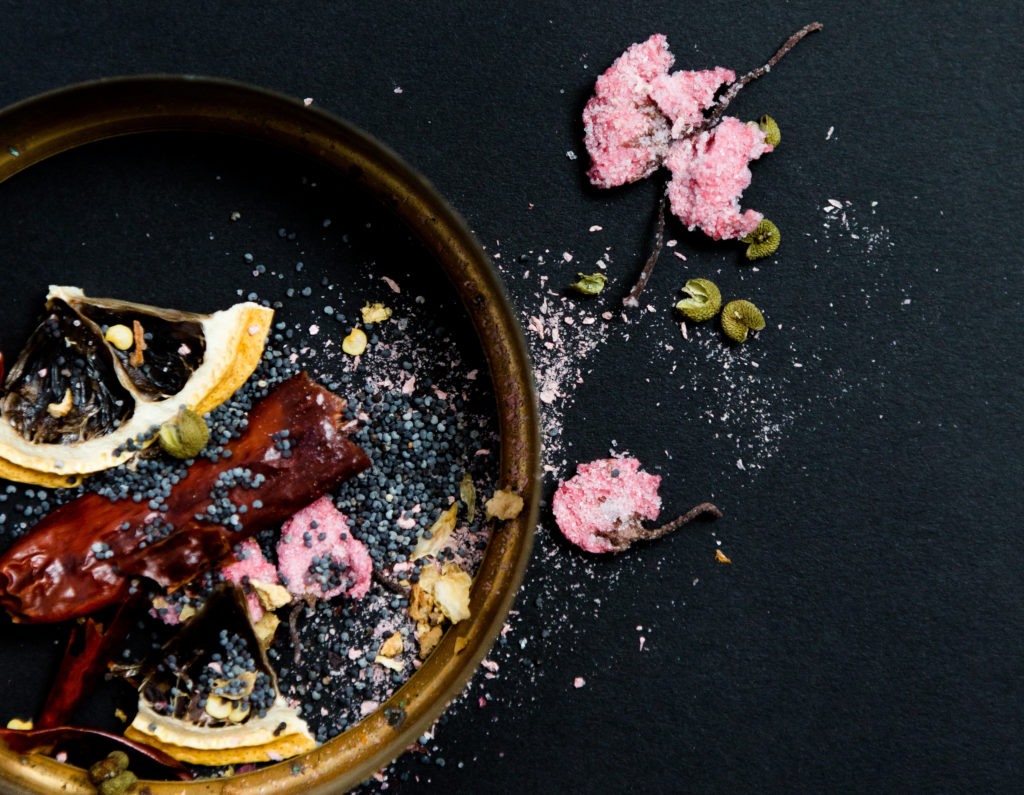
Edo Spice – Japanese citrus & chile seasoning
Ourall new signature blend combines chilies, citrus and rare and invigorating sansho pepper from Japan. Edo (rhymes with ‘meadow’) refers to the historic name of Tokyo, as well as the ‘Edo period’ between 1615 and 1860, when there was great economic growth in Japan. This blend, with its bright, hot flavors and nutty, umami notes is inspired by the traditional Japanese 7 spice (shichimi togarashi) which is believed to have first been assembled in kitchens during the Edo period.
Enjoy this whimsical, dimensional blend simply on top of noodles, rice or veggies, or try making a smashed edamame dip with a bit of garlic and sesame oil to serve as a tasty appetizer with crackers.
Black sesame, orange peel, Japones chilies, poppy seed, wild nori, sea lettuce, dulse, sansho, yuzu, pickled cherry blossom.
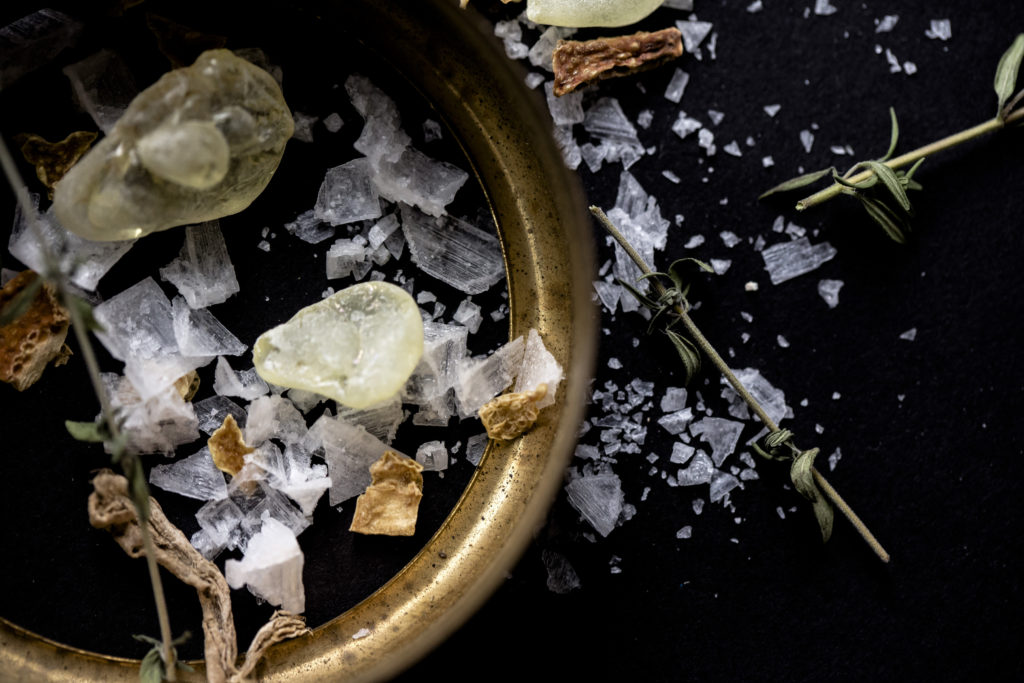
Aegean Salt – Cyprus sea salt with lemon, thyme & mastic
The Aegean sea lies between Greece and Turkey and is home to the island of Chios, where the spice mastic is harvested almost exclusively. This blend combines delicate, crunchy Cypriot salt with the piney scent of mastiha resin, thyme, and lemon peel. Perfect for adding to a breadcrumb topping for fish, or for roasted vegetables, dips, dressings or even a bloody Mary.
Cyprus salt / lemon / thyme / mastic
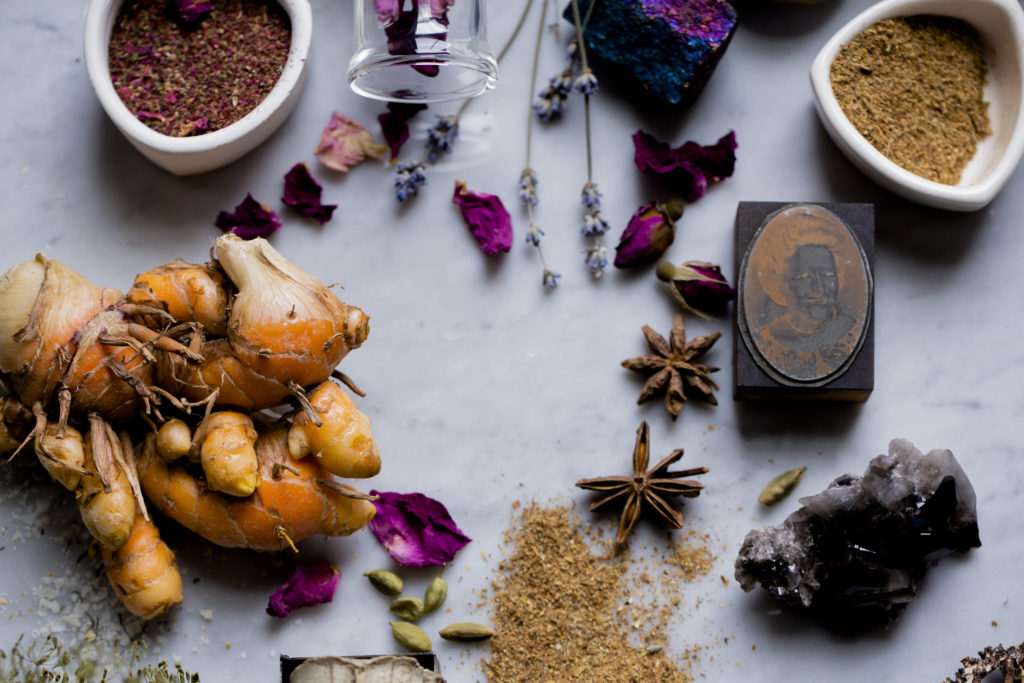
Fleur Spice – A fresh blend of pink pepper, hibiscus & rose
Fleur spice is inspired by the scent of spring when the earth thaws and a peppery, plant and blossom-filled fragrance fills the air. Pink pepper brings a bright, floral quality balanced by the citrusy quality of hibiscus and the intoxicating scent of rose. Delicious as a rub on salmon, lamb or duck, and beautiful as a “coating” for a log of goat cheese. Also delicious with rice & grain salads, strawberries, yogurt and ice cream.
Hibiscus*, pink pepper, anise, fennel, rose petals, coriander, spearmint, cardamom, lavender, ylang ylang (*Allergen warning: hibiscus is intercropped with peanuts)
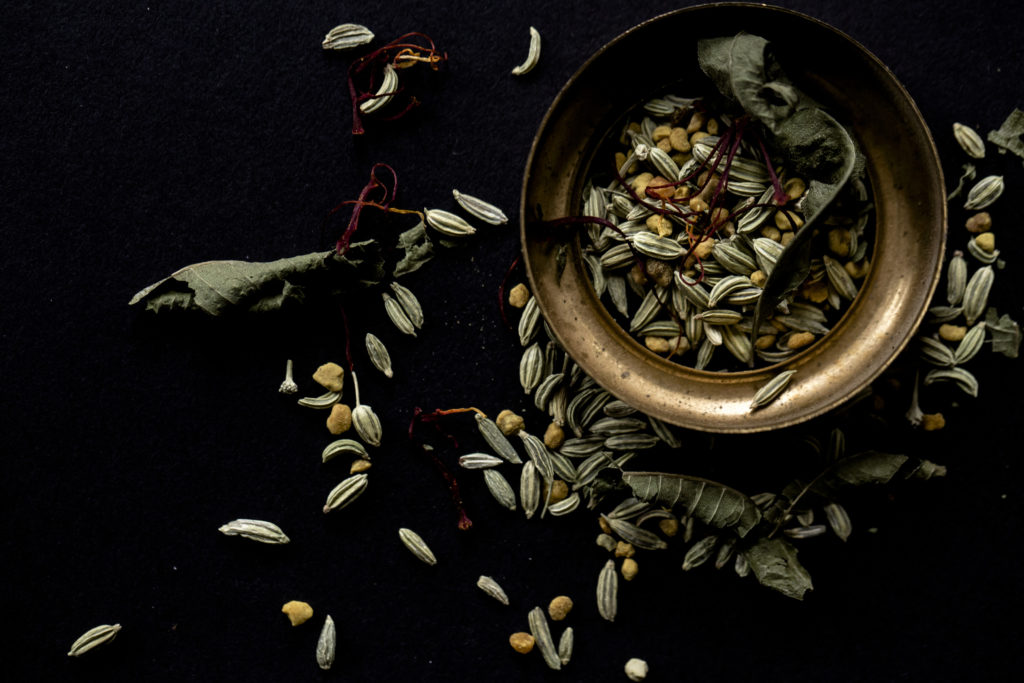
Kozani Spice – Greek Saffron & Herb Blend
Greece is believed to be the ancient botanical origin of saffron. Inspired by the region of Northern Greece now famous for its saffron, this blend is an aromatic combination of herbs and spices that can be used in soups, salad dressings or sauces. Try mixing with fresh lemon juice and spooning over fish or chicken, or toss with vegetables before roasting.
Fennel, lemon peel, bee pollen, lemon verbena, oregano, sage, Greek saffron
Supeq Spice – Spicy & Umami Seaweed Salt
“Supeq” means ocean in a Native American dialect. This blend, made from 100% New England sourced ingredients, is loaded with umami flavor. Nutrient-rich dulse seaweed is mixed with shiitake mushroom, ginger (yes, grown in Massachusetts!), nettle, and hot paprika to create a wicked delicious spice blend that’s healthy, too. Try on top of eggs or fish, mixed into kale salad or sautéed spinach, or just as a sprinkle on popcorn.
Dulse seaweed (ME), sea salt (ME), shiitake mushroom (ME), ginger (MA), paprika (MA), nettle (VT), hot chili (MA)
